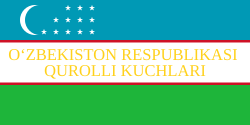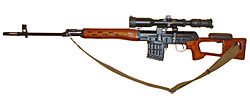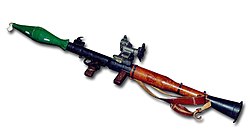History
The armed forces were created in 1992, and along with the army, the air and air defense forces, national guard, and border service were created. Islam Karimov, the then President of Uzbekistan, began calling native Uzbeks in the Soviet Armed Forces back to Uzbekistan to fill the ranks of the newly created ground forces, though many refused to return and renounced their citizenship. Russians made up the majority of the officer corps, while the enlisted personnel were mainly Uzbek.
Uzbekistan then became the only Central Asian state that did not allow Russian Federation citizens to serve in the army, and began to replace the Slavic officers with ethnic Uzbeks. At independence, Slavic officers made up the command of the army, and thus an effort was made to give Uzbeks higher positions, giving Slavics lower ranks. The Slavs who stayed in Uzbekistan accepted Uzbek passports.
Three major Soviet military academies, the Tashkent Higher All-Arms Command School, the Chirchiq Higher Tank Command and Engineering School, and the Samarkand Higher Military Automobile Command School, were located in Uzbekistan. This caused the government to not send Uzbek officers to Russia for training. In 1994, they established the joint Armed Forces Academy, to train officers of all branches. Though the Uzbek language was becoming more in use by the army, Russian remained the main language used in training officers, due to the fact that most manuals were in Russian and that the Central Asian Turkic languages did not have proper military vocabulary.
In 1997, the United States CENTRASBAT program paid over $5 million to fund a training exercise between Uzbek and American troops that were going to be stationed in the country. Later in 1998, a US general attended an Uzbek base that had a unit which took part in the training. Most Uzbek soldiers leave the service when their mandatory conscription ends. The US forces have found this to be the case in Kyrgyzstan and Kazakhstan as well. The army was similarly run to the Soviet one, in terms of command, service, and equipment. Senior commanders gave strict orders that allowed little freedom of decision.
In 2003, the defense ministry announced that the conscription time was lowered from 18 months to 12, and those who attended officer schools only had to serve nine months. It was encouraging higher ranking personnel to serve longer. Many young Uzbeks bribed recruitment officials to not draft them into the army, as dedovshchina was widespread. [1]
This page is based on this
Wikipedia article Text is available under the
CC BY-SA 4.0 license; additional terms may apply.
Images, videos and audio are available under their respective licenses.








































